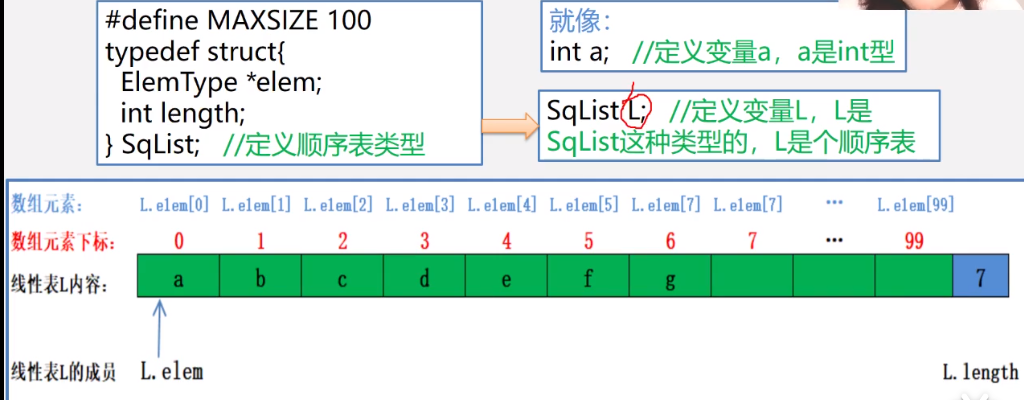数据结构与算法基础——第02周-线性表的顺序表示和实现(2.4.3)
一 概述
- 线性表的顺序存储表示
- 顺序表示意图
- 顺序表基本操作的实现——线性表的基本操作
二 线性表的顺序存储表示
2.1 顺序表(Sequence List)

注意:逻辑位序和物理位序相差1
2.2 代码表示
顺序表类型定义(静态)
1 | #define MAXSIZE 100 |
顺序表类型定义(动态)
1 | typedef struct |
三 顺序表示意图

四 顺序表基本操作的实现——线性表的基本操作
4.1 线性表的基本操作
1 | InitList(&L); //初始化操作,建立一个空的线性表L |
4.2 操作算法中用到的预定义常量和类型
1 | //函数结果状态代码 |
4.3 线性表的基本操作-1
线性表L的初始化(参数用引用)
1 | Status InitList_Sq(SqList &L) //构造一个空的顺序表 |
销毁线性表L
1 | void DestroyList(SqList &L) |
清空线性表L
1 | void ClearList(SqList &L) |
求线性表L的长度
1 | int GetLength(SqList L) |
判断线性表L是否为空
1 | int IsEmpty(SqList L) |
4.4 线性表的基本操作-2(顺序表的取值-根据位置i获取响应位置数据元素的内容)
1 | int GetElem(SqList L,int i, ElemType &e) |